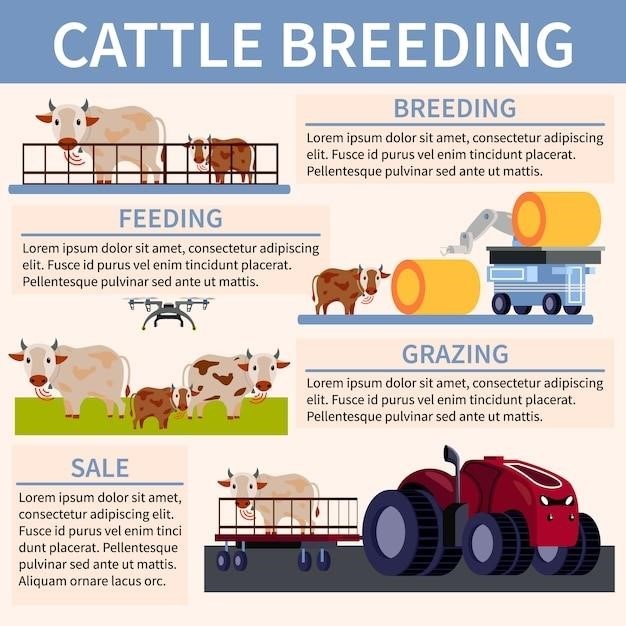Poor Instructions⁚ A Guide to Recognizing and Avoiding Them
In our fast-paced world, instructions are ubiquitous. From assembling furniture to operating complex machinery, we rely on them to guide us through various tasks. However, not all instructions are created equal. Poorly written instructions can lead to frustration, confusion, and even disastrous consequences. This guide will explore the characteristics of poor instructions, their detrimental effects, and provide practical tips on how to write clear and effective instructions.
Introduction
Imagine trying to assemble a piece of furniture with instructions that are riddled with confusing jargon and missing diagrams. Or, picture yourself following a recipe that leaves out crucial steps, resulting in a culinary disaster. These scenarios highlight the frustration and inconvenience that poorly written instructions can cause. Poor instructions can be found in various contexts, from everyday tasks like assembling furniture to complex technical manuals. They often lack clarity, contain unnecessary jargon, and fail to provide adequate guidance, leading to confusion, errors, and wasted time.
Examples of Poor Instructions
Poor instructions can manifest in various forms, making it difficult for users to understand and follow them. One common issue is the use of vague and ambiguous language. For instance, an instruction manual might say “adjust the settings as needed,” leaving the user unsure of what adjustments are required. Another problem is the inclusion of complex and unnecessary jargon, especially in technical manuals. Terms that are unfamiliar to the average user can create confusion and hinder understanding. Additionally, poor instructions often lack visual aids, such as diagrams or illustrations, which can make it challenging to comprehend multi-step instructions. Finally, incorrect or missing information can lead to errors and frustration, as users struggle to complete the task accurately.
Vague and Ambiguous Language
Vague and ambiguous language is a common culprit in poorly written instructions. Phrases like “adjust as needed” or “make sure it’s secure” leave users guessing about the specifics. These instructions lack clarity and offer little guidance, forcing users to rely on their own interpretation, which can lead to errors and frustration. For example, a recipe might instruct you to “cook until golden brown,” but what constitutes “golden brown” varies from person to person. Instead, precise measurements, clear descriptions, and specific guidelines should be used to ensure the user understands the intended outcome and how to achieve it.

Complex and Unnecessary Jargon
Instructions riddled with technical jargon and complex terminology can be a nightmare for users. Imagine trying to assemble a piece of furniture with instructions using terms like “torque,” “hexagonal socket,” or “lateral alignment.” This can be overwhelming, especially for those unfamiliar with the subject matter. Instructions should be written in plain, straightforward language that is easily understood by the target audience. Avoiding jargon and using clear, concise language makes instructions accessible to a wider range of users, reducing confusion and ensuring that everyone can follow them effectively.
Lack of Visual Aids
A picture is worth a thousand words, and this adage holds true for instructions. Visual aids, such as diagrams, illustrations, and photographs, can greatly enhance the clarity and effectiveness of instructions. They provide a visual representation of the steps involved, making it easier for users to grasp the process. For instance, a step-by-step diagram showing how to connect electrical wires is far more helpful than a written description alone. Instructions that lack visual aids can leave users struggling to visualize the process, leading to errors and frustration.
Incorrect or Missing Information
Accurate and complete information is paramount for effective instructions. When instructions contain errors, omissions, or inconsistencies, they can lead to confusion, mistakes, and even damage to equipment or property. For example, a recipe that calls for a specific ingredient but fails to mention the quantity needed can result in a culinary disaster. Similarly, a technical manual that omits crucial safety warnings can pose a significant risk to the user. Thorough proofreading and testing are essential to ensure that instructions are free from errors and provide all the necessary information for successful completion of the task.
Consequences of Poor Instructions
Poor instructions can have a ripple effect, leading to a cascade of negative outcomes. Frustration and confusion are common reactions when users struggle to understand or follow unclear instructions. This can lead to increased errors and mistakes, as users may misinterpret or skip steps, resulting in faulty products, incomplete tasks, or even safety hazards. Furthermore, poorly written instructions can waste valuable time and resources, as users may need to spend extra time deciphering the instructions or redoing tasks due to errors. Ultimately, the consequences of poor instructions can range from minor inconveniences to serious setbacks, highlighting the importance of clear and effective communication in all aspects of our lives.
Frustration and Confusion
Imagine trying to assemble a piece of furniture with instructions that are riddled with jargon, missing steps, or unclear diagrams. The experience can be incredibly frustrating, leaving you feeling lost and overwhelmed. Poor instructions often lead to confusion, as users struggle to interpret ambiguous language, decipher complex terminology, or follow illogical sequences. This can lead to a sense of helplessness and frustration, as users find themselves unable to complete the task at hand. The resulting frustration can also impact user satisfaction and create negative perceptions of the product or service involved, ultimately hindering the overall user experience.
Increased Errors and Mistakes
When instructions are unclear or inaccurate, users are more likely to make mistakes. This can lead to a range of issues, from minor inconveniences to serious safety hazards. For example, a poorly written instruction manual for a piece of machinery could lead to an operator misinterpreting a crucial step, resulting in an accident. Similarly, a recipe with missing or incorrect ingredients could lead to a disastrous culinary outcome. In these cases, poor instructions can have real-world consequences, leading to increased costs, wasted time, and even potential legal liability.
Wasted Time and Resources
Poor instructions can lead to significant waste of time and resources. When users struggle to understand instructions, they may have to spend extra time trying to figure out what to do. This can lead to delays in projects, missed deadlines, and increased frustration. Additionally, errors caused by poor instructions can result in wasted materials, rework, and even the need to start a project over from scratch. In a business setting, this can lead to significant financial losses, while in a personal setting, it can simply make completing a task more time-consuming and stressful.
Examples of Poor Instructions in Everyday Life
Poor instructions are not just confined to technical manuals or academic papers. We encounter them in our daily lives, often leading to frustration and confusion. One common example is IKEA furniture assembly instructions, notorious for their cryptic diagrams and ambiguous language. Technical manuals for electronics can also be notoriously difficult to decipher, especially for those unfamiliar with technical jargon. Recipes with missing or confusing steps can turn a simple cooking project into a culinary disaster. Even everyday tasks like voting or posting something can be made unnecessarily complicated by poorly written instructions.
IKEA Furniture Assembly Instructions
IKEA furniture assembly instructions are often cited as prime examples of poor instructions. While the company has made efforts to improve its manuals, they still frequently contain cryptic diagrams, vague language, and a lack of clear step-by-step guidance. The instructions often rely heavily on visual cues, assuming a level of spatial reasoning that not everyone possesses. This can lead to confusion, frustration, and even damaged furniture as users try to decipher the instructions. The use of universal symbols can also be problematic, as these may not be universally understood. The result is a frustrating experience that can leave even the most patient DIY enthusiast questioning their sanity.
Technical Manuals for Electronics
Technical manuals for electronics often fall prey to poor instructions due to the complexity of the subject matter. The use of technical jargon and complex diagrams can make the manuals difficult to understand for the average user. Many manuals fail to provide clear and concise instructions, instead opting for dense blocks of text that are overwhelming and difficult to navigate. The lack of visual aids and step-by-step guidance can leave users feeling lost and confused. Furthermore, the translation of manuals into multiple languages can introduce errors and inconsistencies, further hindering understanding. The result is a frustrating experience that can leave users struggling to understand their electronic devices and repair them.
Recipes with Missing or Confusing Steps
Recipes are a prime example of how poor instructions can ruin a culinary experience. Imagine following a recipe that instructs you to “add a pinch of salt” without specifying how much. Or, perhaps the recipe skips over a crucial step, leaving you wondering how to proceed. Missing or confusing steps can lead to frustration, uncertainty, and ultimately, a dish that doesn’t turn out as intended. Vague language, such as “cook until golden brown,” can also lead to misinterpretations and inconsistent results. Additionally, recipes that lack clear visuals or step-by-step instructions can leave home cooks feeling lost and overwhelmed, ultimately leading to a disappointing culinary experience.
How to Improve Instructions
Crafting effective instructions requires a mindful approach that prioritizes clarity, conciseness, and user-friendliness. Employing straightforward language that avoids jargon or technical terms is paramount. A step-by-step format with clear, numbered instructions ensures a logical flow and minimizes confusion. Incorporating visual aids like diagrams, illustrations, or even short videos can greatly enhance comprehension and make the process more intuitive. Finally, testing the instructions with real users is essential to identify any ambiguities or inconsistencies, allowing for refinements and ensuring a smooth and successful user experience.
Use Clear and Concise Language
The foundation of effective instructions lies in clear and concise language; Avoid using jargon, technical terms, or overly complex sentence structures. Opt for simple, everyday language that everyone can understand. For example, instead of saying “Utilize the widget to activate the mechanism,” use “Use the widget to turn on the device.” This straightforward approach eliminates ambiguity and allows users to easily grasp the instructions.
Provide Step-by-Step Guidance
Break down complex tasks into manageable steps. Each step should be clearly defined and sequential, guiding the user through the process logically. Numbering the steps helps users track their progress and avoids confusion. For example, “Attach the bracket to the wall using the provided screws” is more effective than “Secure the bracket to the wall.” This detailed approach ensures that users understand each stage of the process and can complete the task successfully.
Include Visual Aids
A picture is worth a thousand words, especially when it comes to instructions. Visual aids like diagrams, illustrations, and photographs can greatly enhance clarity and comprehension. They provide a visual representation of the steps, making it easier for users to understand the process, identify parts, and avoid errors. For example, a diagram showing the correct placement of screws or a step-by-step illustration of how to assemble a piece of furniture can make a significant difference in user experience.
Test the Instructions Thoroughly
The best way to ensure your instructions are clear and effective is to test them rigorously. Ask someone unfamiliar with the process to follow the instructions and provide feedback. Observe their progress, identify any areas of confusion, and revise the instructions accordingly. This testing phase allows you to identify potential ambiguities, missing steps, or confusing language, ultimately improving the user experience and minimizing errors. Don’t underestimate the value of real-world testing, as it can reveal flaws that might not be apparent during the initial writing stage.
In a world increasingly reliant on technology and complex processes, clear and effective instructions are essential. Poor instructions can lead to frustration, errors, and wasted resources. By understanding the characteristics of poor instructions, their potential consequences, and implementing strategies for improvement, we can create a more efficient and user-friendly experience. Whether you’re writing instructions for a product, a task, or a process, remember to prioritize clarity, conciseness, and thorough testing to ensure your instructions are understood and successfully followed.


